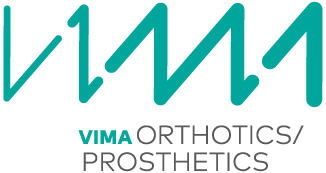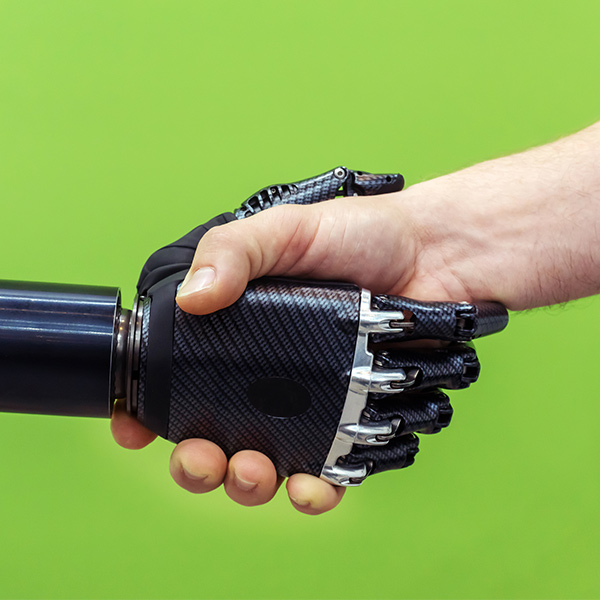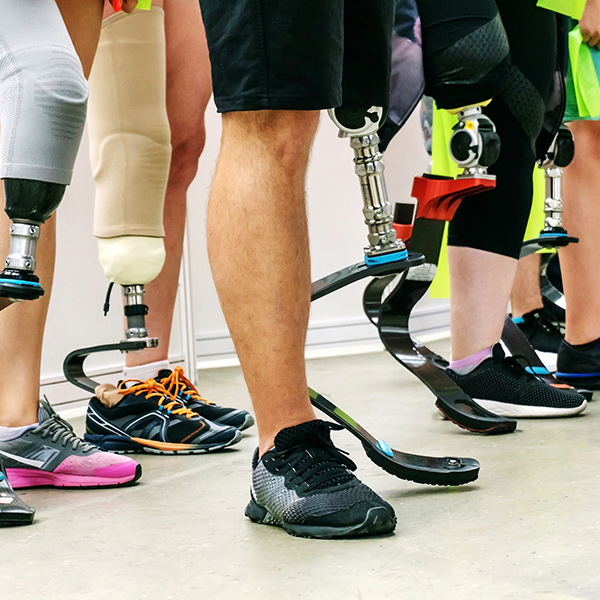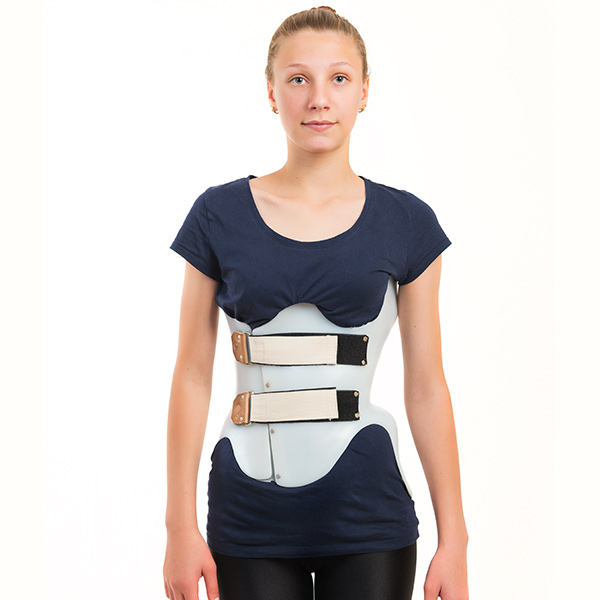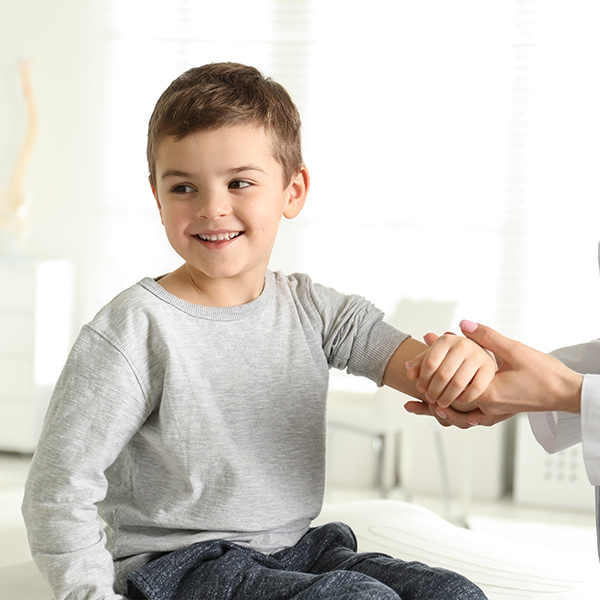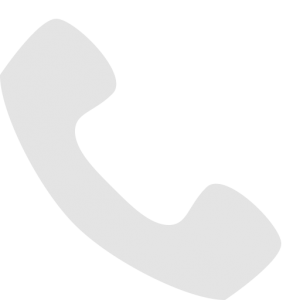“Do not let what you cannot do interfere with what you can do.”
— John Wooden
Products and services
- Orthotics
- Prosthetics
- Conditions
Orthotics
We offer a range of solutions to help children diagnosed with cerebral palsy, muscular dystrophy or other childhood musculoskeletal and neurological conditions to meet their functional and mobility goals. The possibilities are endless.
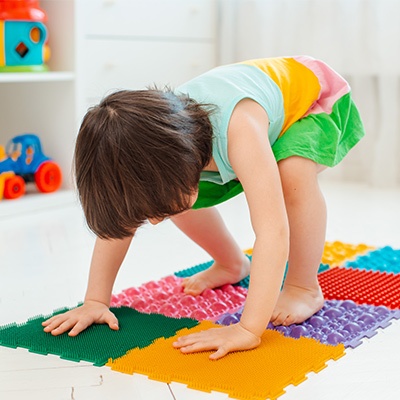
Our solutions include a range of leg braces for children of all ages, scoliosis braces and insoles and orthopaedic footwear for very few and selected cases that absolutely need them amongst other equipment.
We work closely with our referees to co-ordinate your child’s orthotic care and our realistic approach towards goal setting, which is key in achieving the outmost from the orthosis.
Optimising the fit of the device during a child’s growth is essential to maintain their independence and compliance as well as optimising their gait where this is applicable.
We acknowledge the fact that allowing the children to choose from several design options reflects their unique personality and character. Our options of transfer designs onto the thermoplastics achieve this.
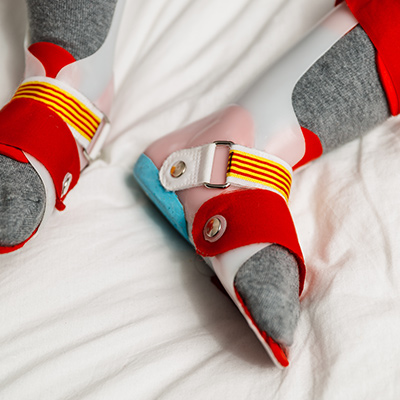
Goal Setting & Outcome Measures
Our prosthetist at VIMA is experienced in using outcome measurements. Outcome measures are used to show change and improvement. They are useful tools for the patient and the referrers to show that you are receiving a valuable return and a device that matches the expectations and goals.
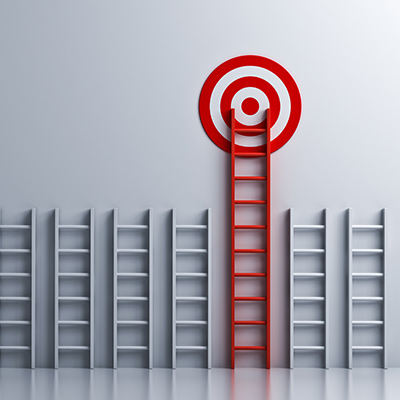
Prosthetics
No two children are the same and each child has a different story to tell. Our roots in dealing with children with orthopaedic and other disabilities lies deep within our heart at VIMA as we strive to understand each child’s unique physical, emotional, and social interaction needs. This core value helps us design the right solution to fit their life or at the very least provide them with multiple options to allow them lead a normal life.
We work closely with paediatricians, occupational and physical therapists, and other care providers, to deliver the best possible outcomes for each child today and into the future.
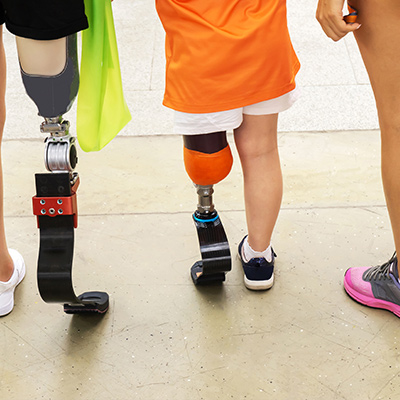
Prosthetics in the context of paediatrics usually involves congenital absence or missing of a body part. The main objective in paediatric prosthetics is to allow the child match their expected milestones for their age.
The weight is an important factor and the materials and components used are lightweight. As soon as the family feels ready to understand the prosthetic options that are available they should arrange a meeting with a prosthetist to discuss these in more detail.
Infants and very young children can be fitted with a passive prosthesis right away. This helps them develop their body image and use it in their daily life. The prosthesis helps them socially by interacting with their peers.
As the residual limb changes with age, the child will need to be re-casted for a new socket and it is important to arrange regular follow ups with your prosthetist. Most children require a new socket or modifications at least once a year.
Our prosthetist will teach you how to put on and care for the prosthesis but the input from other allied health professionals should not be excluded.
Advanced Prosthetic Systems
Children are excellent in finding their own ways to get things done and most activities children can do with their “regular” prosthetic limb. However, certain activities for users require task specific prosthetic systems. Below are some examples where a more advance prosthetic system may be needed:
- Running
- Bicycling
- Swimming
- Tennis
- Archery
Get in touch with VIMA to discuss.
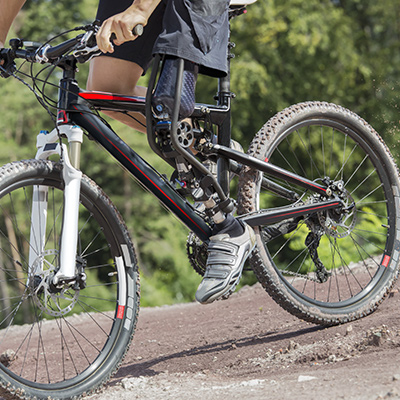
Custom designs
Children love to choose the colours and patterns on their prosthesis. At VIMA we have organised to source the best and most up-to-date designs of patterns to use on your prosthesis you the opportunity to add your own personal stylistic touch to it.
Conditions
Leg Length Discrepancy
When one limb is longer than the contralateral limb then there is leg length inequality. It can be as a result of trauma or other underlying condition and the discrepancy can arise either above or below the knee. Nonetheless, the discrepancy can be minimised as much as possible with either heel lifts inside the shoe or shoe raises that are added on the sole of the shoe.
Flexible and Rigid Flat Feet
There are usually two types of flat feet, the “good” and the “bad”. A more rigid flat foot type requires close attention and monitoring from a specialist orthopaedic surgeon, as it can be a sign of a more significant underlying orthopaedic condition such as a fusion of a joint. A flexible flat foot on the other hand tends to be less severe and treatment with orthotics is usually based on whether or not there are any symptoms associated.
Cerebral Palsy
When CP affects the limbs it can cause contractures and tightness to the muscles that drive the joints and bones in both the legs and the arms and therefore can affect tasks such as walking or other activities of daily living like holding onto objects and other fine finger tasks.
Orthotics plays a big role in the overall management of children with CP, from the mildest of forms to the more severely affected.
Preservation of range of motion and preventing contractures, maintaining upright posture, walking efficiency and fluidity and reducing pain from deformed joints are only a handful of reasons for a parent to visit an orthotist.
You can read more on our dedicated section.
Idiopathic Adolescent Scoliosis
Scoliosis is a musculoskeletal pathology characterised by a lateral bend and rotation in the spine making it a three dimensional deformity. It is most common to develop during teenage or pre-teenage years and is more prevalent in girls. There are other forms of congenital scoliosis such as scoliosis derived from muscular dystrophy, cerebral palsy and hemi vertebrae, however the main cause of scoliosis remains unclear. Each type is treated and managed somewhat differently. If you are not sure about the type of scoliosis then it is best to seek advice from your doctor to undergo a thorough examination and radiographic evaluation of the spine.
A corset or brace is a very common treatment modality used to manage scoliosis and at VIMA we offer this type of product, which is exclusively custom made to the patient’s exact dimensions and measurements.
Patellofemoral Pain Syndrome (PFPS)
This is an umbrella term for usually sporty kids that experience pain in the front area of their knees. It rarely needs any surgery and physical therapy and orthotics have been shown good results. It is important to understand the underlying mechanism and a visit to an orthopaedic consultant is indicated.
Charcot Marie Tooth
Charcot Marie Tooth (CMT) is an inherited progressive disease that affects the peripheral nerves. It’s also known as Hereditary Motor and Sensory Neuropathy (HMSN) or Peroneal Muscular Atrophy (PMA). Progressive muscle weakness becomes apparent usually in adolescence or early adulthood but symptoms can present at any age. A common symptom of CMT is flaccid foot drop, which can cause difficulties with walking and balance.
Spina Bifida
Spina bifida is when a baby’s spine and spinal cord does not develop in the womb, which causes a gap in the spinal cord. It is unknown what causes spina bifida to develp in babies however lack of folic acid before and early on during pregnancy is a risk factor. There are different types of spina bifida and can patients with spina bifida have a complex of issues, however a common symptom is that of weakness in legs. In ambulatory patients with spina bifida an AFO may be indicated to help the user walk and provide stability.
Useful info and tips
What should I expect during my first visit?
During the first appointment we will go through a full assessment of your needs, how the condition affects you and we will discuss a range of your options so that you have a holistic insight and what to expect from your device.
We are keen supporters of outcome measures so expect to be given questionnaires before your appointment as well as perform certain tasks that are measureable which we review through your journey at VIMA.
Final step in this first appointment is to take any necessary measures and/ or cast and discuss the details of the device.
For any device we require a 50% deposit.
You can look here for more details regarding the Process.
What should you bring along to your first appointment?
Bring along a spare pair of shorts, as the process of casting is messy. Shorts are always advised during review appointments as they allow for easy access to the componentry as well as easier donning and doffing of your prosthetic leg.
How do I look after my device?
We have a dedicated section on our FAQs (Link to FAQs) and blogs (link to blogs) on how to look after your prosthetic limb or liner, or your custom orthosis.
A basic rule of thumb is to use a damp cloth with neutral soap and gently wipe down every now and then. Avoid placing the device near sources of direct heat and dry them naturally as heat and wet conditions tend to have a negative effect on the materials and components.
